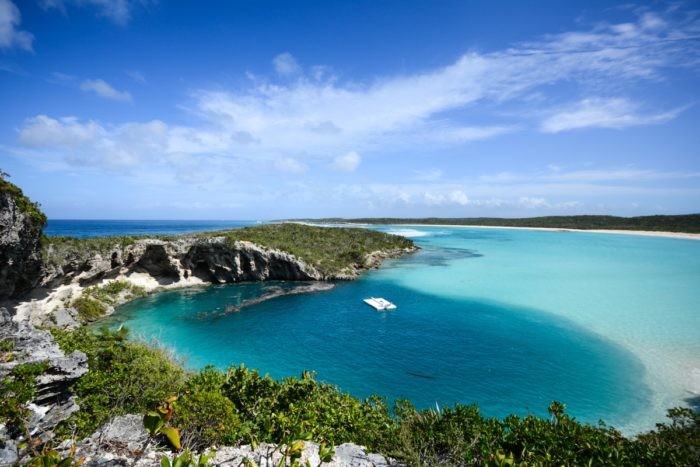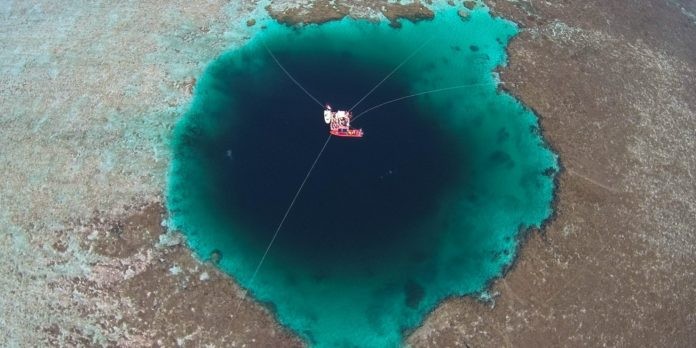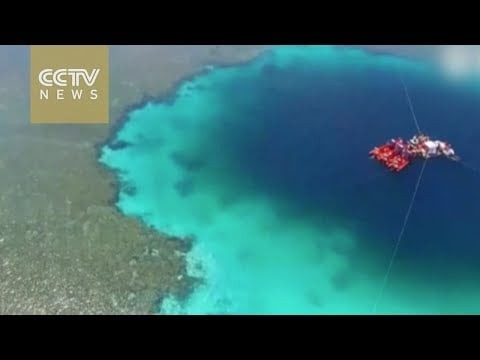There’s something magical about blue holes. Perhaps it’s the irresistible draw of their sapphire-coloured depths, or perhaps it’s the thrill of never being quite sure what those depths harbour. Either way, blue holes are an object of fascination for the adventurous scuba diver, and a veritable playground for freedivers.
In July, scientists confirmed the discovery of a new blue hole, located near China’s Paracel Islands. Dubbed the Dragon Hole and known by locals as the eye of the South China Sea, it is now the world’s deepest known underwater sinkhole. The entrance is approximately 130 metres/ 426.5 feet in diameter, whilst the hole itself plunges to a staggering depth of 300.89 metres/ 987 feet. To put that into perspective, that’s more than three times deeper than Big Ben is tall, while iconic London skyscraper The Shard would be almost completely submerged. At exactly 300 metres/ 984 feet in height, Paris’ Eiffel Tower is the most accurate comparison.
Researchers from the Sansha Ship Course Research Institute for Coral Protection confirmed these statistics using an underwater robot equipped with a depth sensor. The team began a ten month exploration of the Dragon Hole in August 2015, and in that time they have discovered no fewer than 20 marine species living in the upper reaches of the sinkhole. Like many blue holes, however, the Dragon Hole experiences poor water circulation and as a result, the water below 100 metres/328 feet is anoxic, or oxygen-free. Therefore, it is likely that below that depth, the blue hole is an effective dead-zone.
Although the depth of the Dragon Hole has only recently been confirmed, Paracel Island fishermen have known about the sinkhole for centuries. According to Chinese news agency Xinhua, local legend has it that the hole is the undersea palace of the Dragon King of the East Sea, a character made famous by 16th Century novel Journey to the West. The story is an icon of classic Chinese literature, and in it the Monkey King takes one of the undersea palace’s pillars to use as his magical staff and weapon. The mythology surrounding the new blue hole only serves to make the phenomenon more intriguing.
Science has a more rational explanation for the Dragon Hole’s existence, however. Like other blue holes, it was most likely formed during past ice ages, when the sea level was significantly lower than it is now. Glacial meltwater would have been absorbed by porous rock (usually limestone), over time creating sinkholes and subterranean caverns. When the ceilings of these caverns collapsed, a deep hole would have been formed, which would then have filled as the sea level rose. Although some submarine sinkholes boast impressive visibility, their characteristic blue colour is caused by depth rather than water clarity.

The Dragon Hole took its title as the world’s deepest underwater sinkhole from Dean’s Blue Hole, located on Long Island in the Bahamas, which plunges to 202 metres/ 663 feet. Dean’s is a famous freediving spot, and the location for Suunto’s annual Vertical Blue freediving competition. Other famous marine blue holes include Belize’s Great Blue Hole (124 metres/ 407 feet deep), and Egypt’s Blue Hole (120 metres/ 394 feet). Freshwater sinkholes can get much deeper. Mexico’s El Zacatón sinkhole is thought to be one of the world’s deepest water-filled sinkholes, with a total depth of 339 metres/ 1,112 feet.
The Sansha City government of China’s Hainan Province has already drafted measures to protect and study the blue hole, with vice mayor Xu Zhifei stating that “we will strive to protect the natural legacy left by the Earth”. It’s not yet clear what kind of access will be given to divers, but hopefully blue hole aficionados will soon be able to add a new destination to their bucket list.


